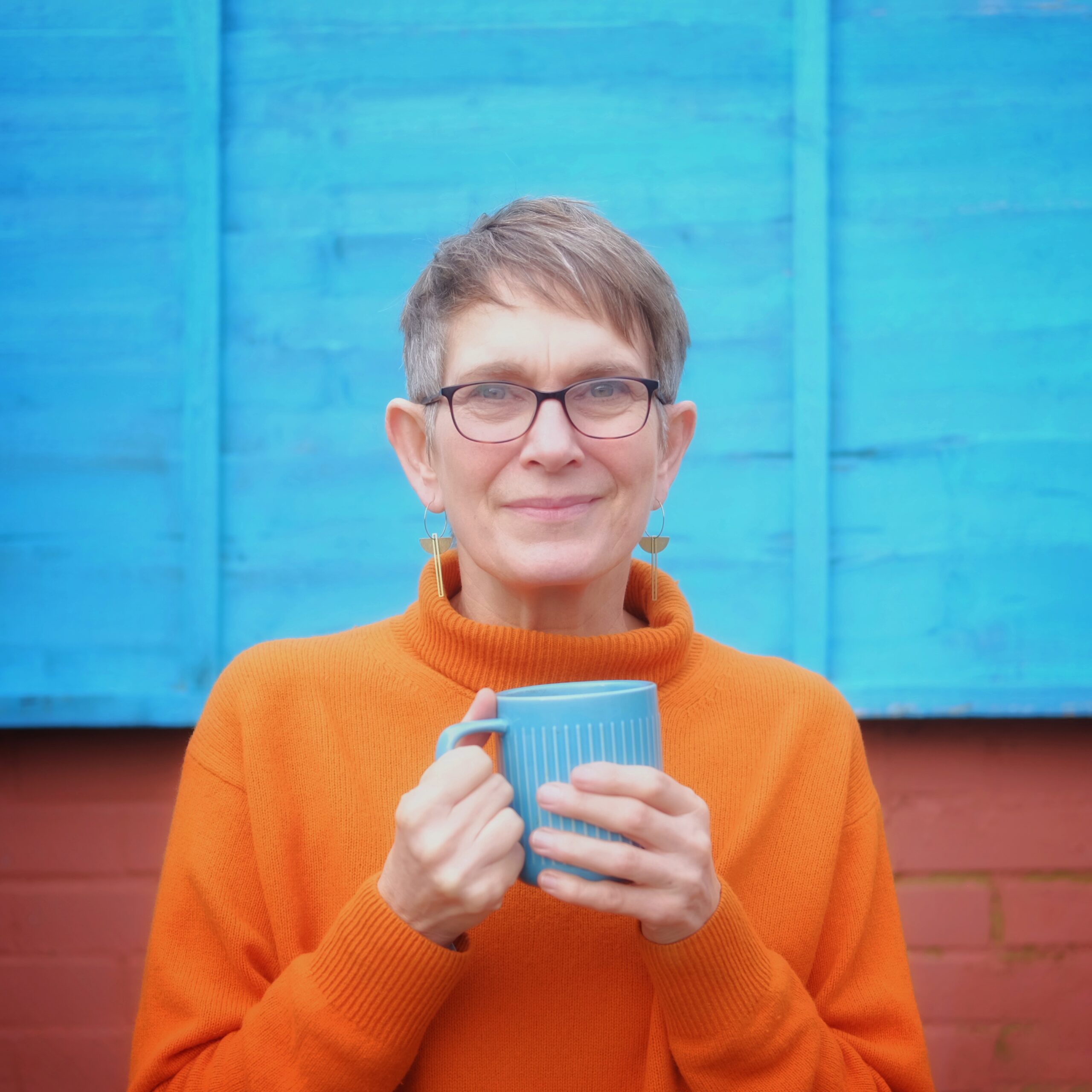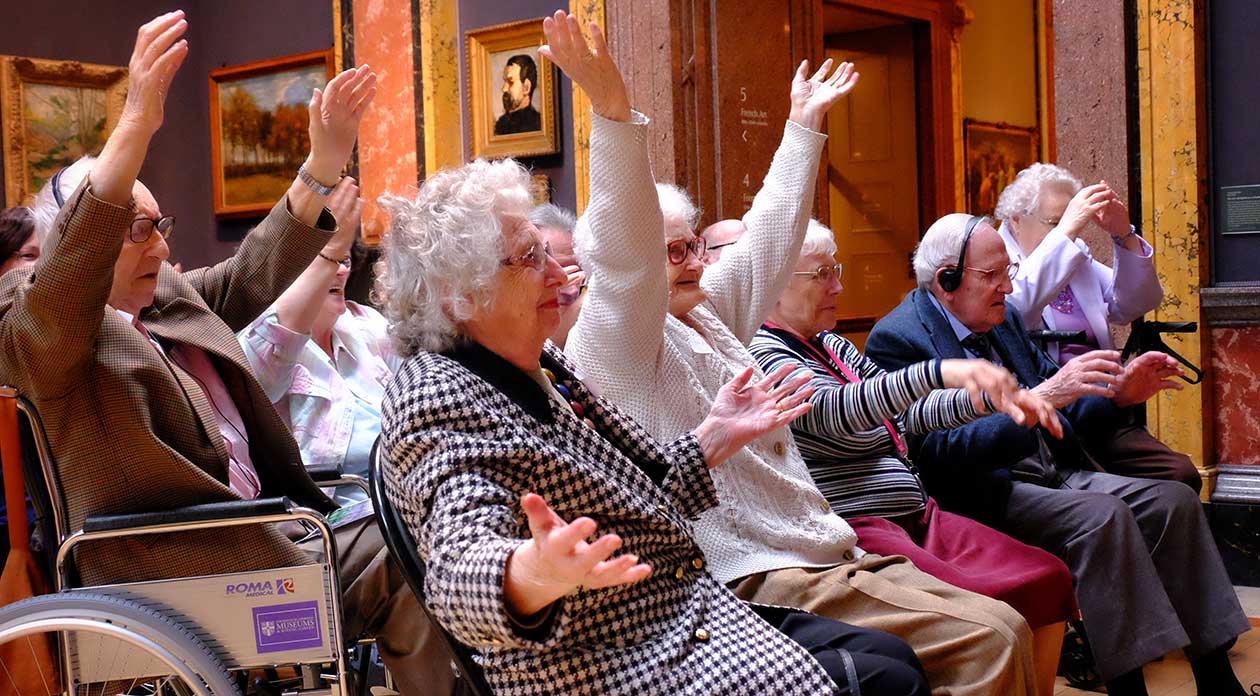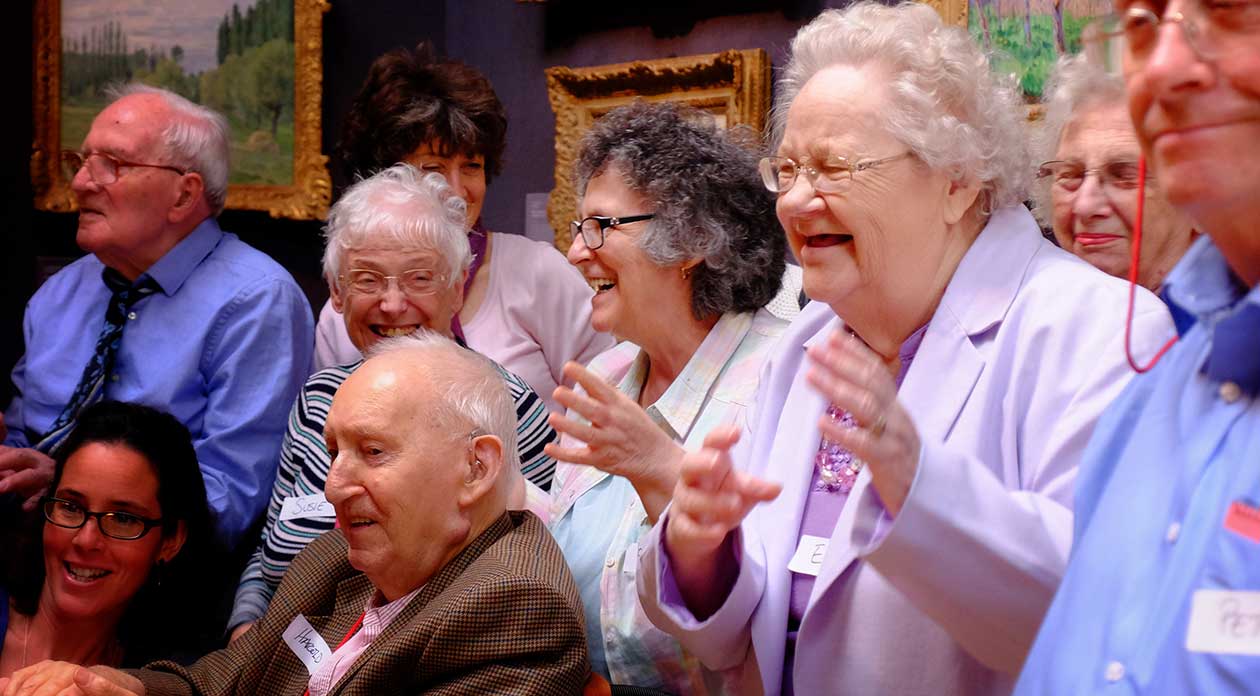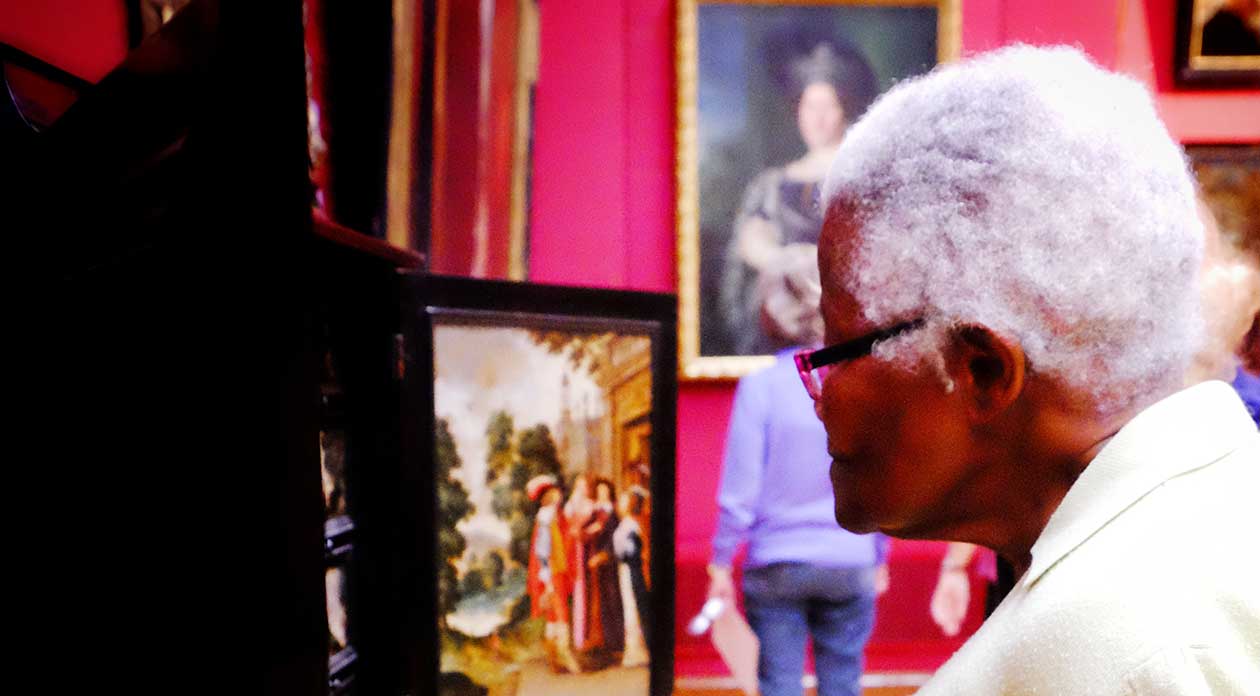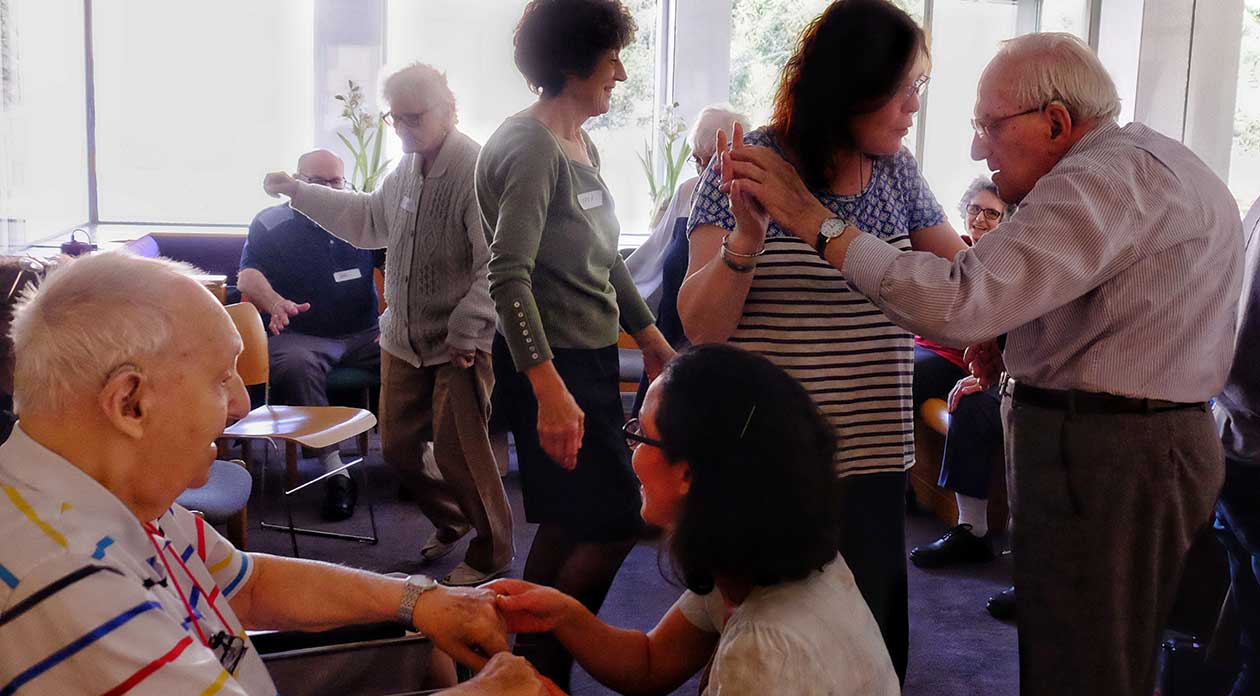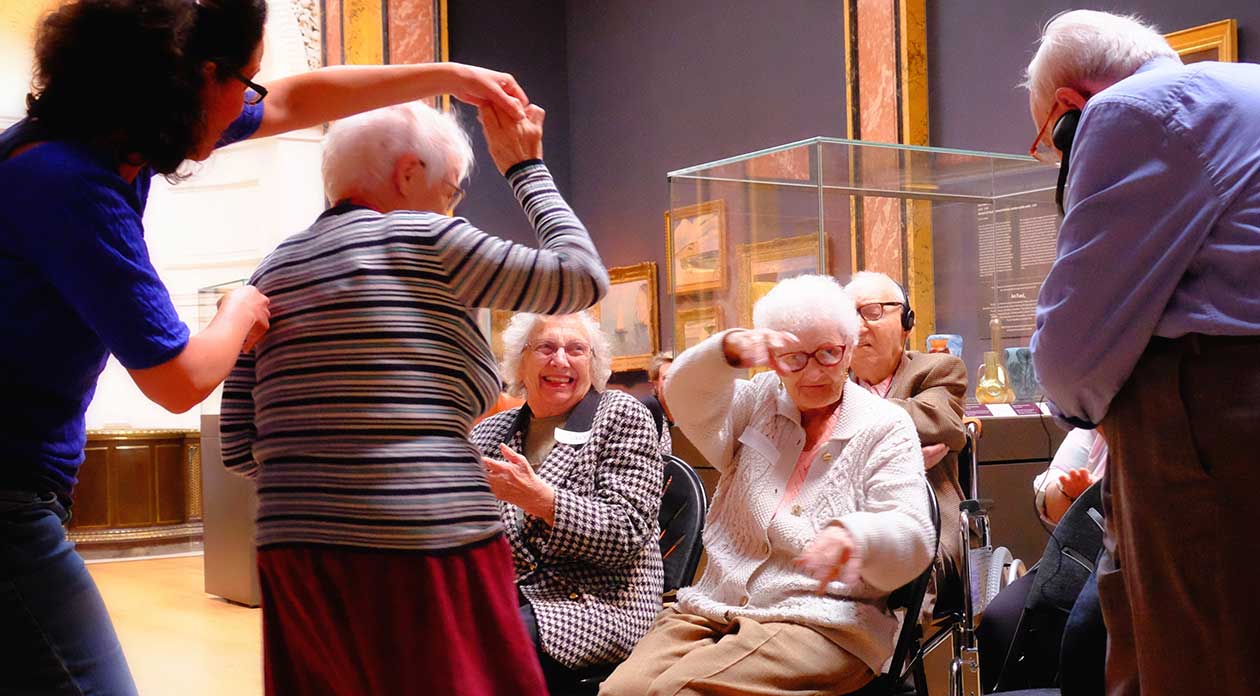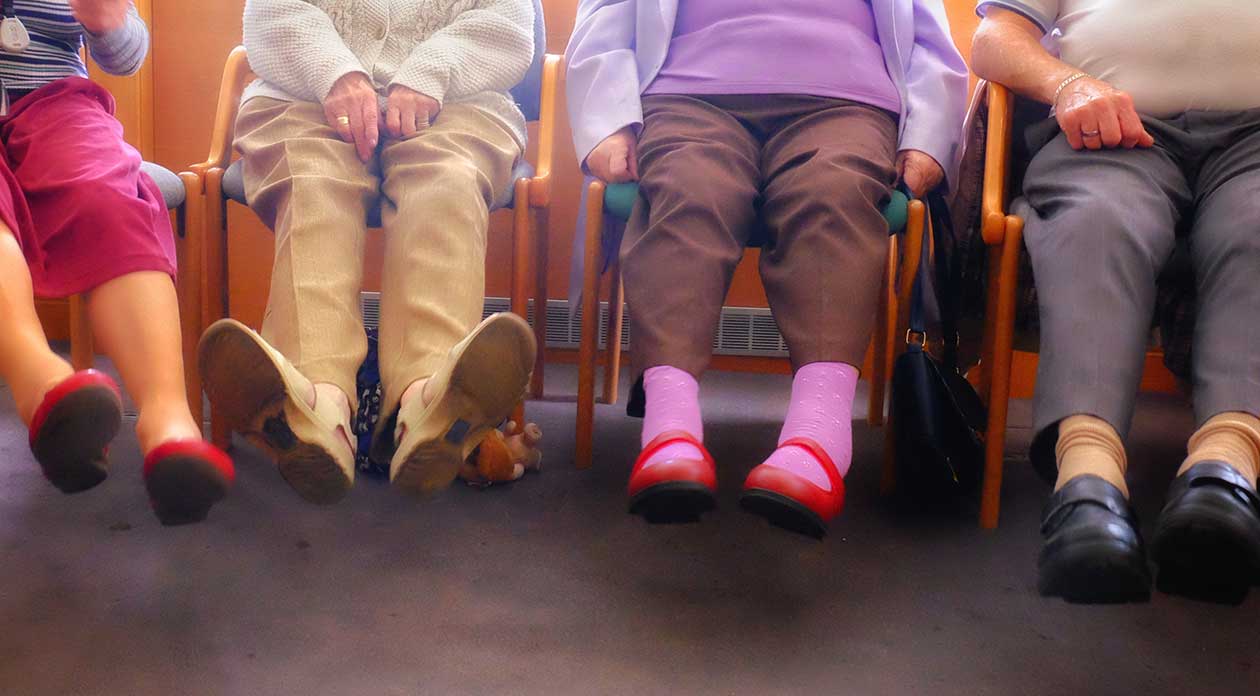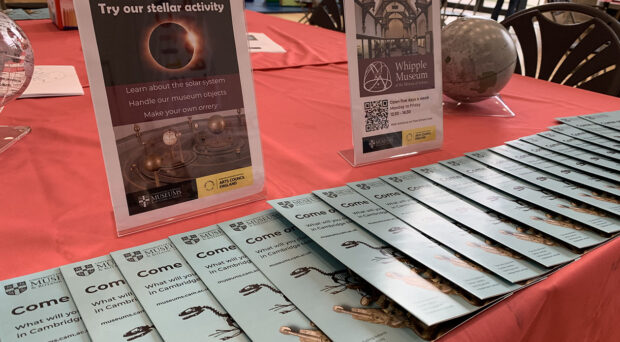Sheltered housing residents come to the Fitzwilliam to test a unique pilot project
Facilitators: Ruth Clarke, Fitzwilliam Museum Inclusion Associate and Filipa Pereira-Stubbs, independent dance artist reflect on the experience.
I’m safe… comfortable and relaxed… I’ve got a license to move
The idea to dance in the museum grew from a simple idea: the conviction that people should be able to dance in beautiful spaces, inspired by their surroundings. Wellbeing can be enhanced through shared cultural experience, dance, self-expression and beauty, so why not dance in a place defined by beauty, the Fitzwilliam Museum?
To test this conviction, a group of older adults were sought to explore how such a project could work and what impact it might have on them. The isolation and subsequent low levels of wellbeing that can haunt many older people led to a collaboration with the Cambridge City Council Independent Living Service who were keen to see if the people they support would benefit from the experience.
Three outreach sessions followed at sheltered housing schemes where residents advised about access for themselves and their peers (to the museum), ideas for activities and artworks in the collection they felt could best inspire dance. These sessions shaped two pilot programmes where a total of thirty sheltered housing residents visited the museum to explore artworks, listen to music and dance together.
I used to come here often with my husband but that was so long ago. It’s no fun on your own…
Dance and wellbeing
Movement and music allows us to become more present and energised in our bodies, and increases our confidence in ourselves. Done in a welcoming and safe environment, guided movement can grow to become a dance, a solo or a duet, a social experience or a gentle meditation. Through movement and dance we explore and express images & ideas, moods & emotions. We feel connected to others and to our environment, and become part of something larger than ourselves. It’s a shared and fun experience. The kinesthetic and non-verbal language of dance is key to supporting communication.
Considerations when starting out
The participants told us that visiting a grand museum can be overwhelming – too crowded, too much distance to cover, too much to look at. For some there was a lack of confidence in knowing how to visit, knowing what to think, what to look at and how to take it all in. Many had never been to the Fitzwilliam Museum before, several had never been to a museum, and most hadn’t been since their own children were little.
We wanted to find a way of supporting a positive museum experience, acquiring knowledge of the collection whilst creating a valuable social group in a cultural setting. At the same time, we wanted our participants to experience something very different and, we believed, exciting. We needed to find our way together and be inclusive – allowing for everyone to join in the processes of looking, absorbing, listening to one another, listening to music and finding movement and dance. Quite a few of the group declared themselves to be non-dancers and the majority hadn’t danced for far too long – all were new to the idea and experience of dancing at a museum. We knew we had to bring movement and dance in slowly and in careful stages.
I’ve never been – so wouldn’t think to come, like many people, they probably don’t come because that don’t have anyone to show them the interesting things.
Art, dance and music as one experience
We took three galleries as our inspiration over three sessions, repeating the pilot twice with two different groups. Focusing on one art piece in each room, we were privileged to have the gallery closed so that we had the space to ourselves. We took it in turns to guide different sections of the sessions.
Filipa introduced simple movements to help us settle and relax, uninterrupted by other museum visitors. We had the extraordinary privilege of playing music (softly) in the galleries to accompany our movement. Through shared conversation, Ruth guided and mapped out what we saw and knew in the artworks. Together, we gathered impressions, points of view, and stories. We finished by taking time to look at other artworks in the gallery allowing ourselves to take in what we liked, what we were drawn to – and of course, what we didn’t like.
Back in the Museums’ Meeting Room, we continued our creative explorations using our experiences in the galleries as a springboard to begin moving together. We had a palette of music to choose from, searching for music that most accurately reflected the art piece and ensuing conversation. A rare form of DJ’ing. Seated comfortably, we began simple warm up movements that shifted, song by song, into more expressive movement and in some cases, standing up dances. We finished our afternoon together with all important refreshments and yet more conversation.
(This is) very relaxing … Important to have a space to feel free, I wouldn’t dream of doing this at home.
Importance and challenge
Although we had done consultations with each of the groups and were confident that they understood what they were signing up to, we knew there would be obstacles to navigate. It was important to allow ourselves ample time and care, anticipating there would be a general lack of familiarity with the museum space along with degrees of unease with the notion of dancing. Interestingly, it did not take long for both groups to recognise the value of these new experiences.
Participants appreciated learning more about the paintings, receiving new information whilst having their own opinions and impressions validated. The conversational approach to learning was hugely enjoyed. Regarding the dance aspect, it was acknowledged at first that moving was ‘good for you’, even though it was unusual to be doing this at a museum.
There were practical issues to resolve – ease of access, issues around hearing and sight. Difficulties with how paintings were hung and could be viewed. There was initial unease with doing movement – a sense of self-consciousness. What would the family think if they could see their mother/father/grandfather now? Sometimes the connection between viewing a painting and dancing seemed obscure. And yet, by the end of the third and last week there was clearly enough trust and confidence in us, the facilitators, and each other to appreciate and enjoy all aspects of the session. A prevailing sense of fun and camaraderie melted reservations.
The group experience
They experienced a cultural social experience that was more personal and open than the usual social excursion. They told us they felt welcomed, valued, and they had great fun. There was a clear sense of how eagerly participants welcomed ongoing opportunities to express themselves, both in conversation and in dancing together. There was a willingness to reveal and share more about themselves than they might do on other more traditional social excursions. Although many of them delighted in their outspokenness (earned with maturing age we were told) they emphasised that being able to talk freely continues to be very important. What impressed us was how readily participants gave each other confidence and license to experience something different – from hearing varying (sometimes opposing) points of view on the paintings to daring to stand up and dance.
It’s such a release to move and dance: I’ve got so much inside that wants to come out…
Evaluation
Evaluation of the pilot demonstrated a real appetite for Dancing in the Museum to become a regular feature in participants’ lives and in the life of the museum.
70% of the participants had never been to the museum before and of the 30% who had, they hadn’t been in the last 5-10 years. Access to the city centre, confidence in navigating the museum and a belief that the museum was ‘not for me’ were the main barriers to visiting.
Visiting as a group, taking part in activities that were social, sharing and self-expression along with the provision of transport were key in overcoming these. Being active and learning together fostered a universal enthusiasm to know more, dance more and visit more.
Responding to this we are now exploring how to set up a programme for the year ahead, participants have said they would like this to be monthly, a special trip to look forward to and that having a safe space, free from noise and crowds is key to the magic of the experience. It’s likely that we will be able to make this happen from the autumn of 2017, so watch this space…
What makes it interesting is that we all see it differently…

